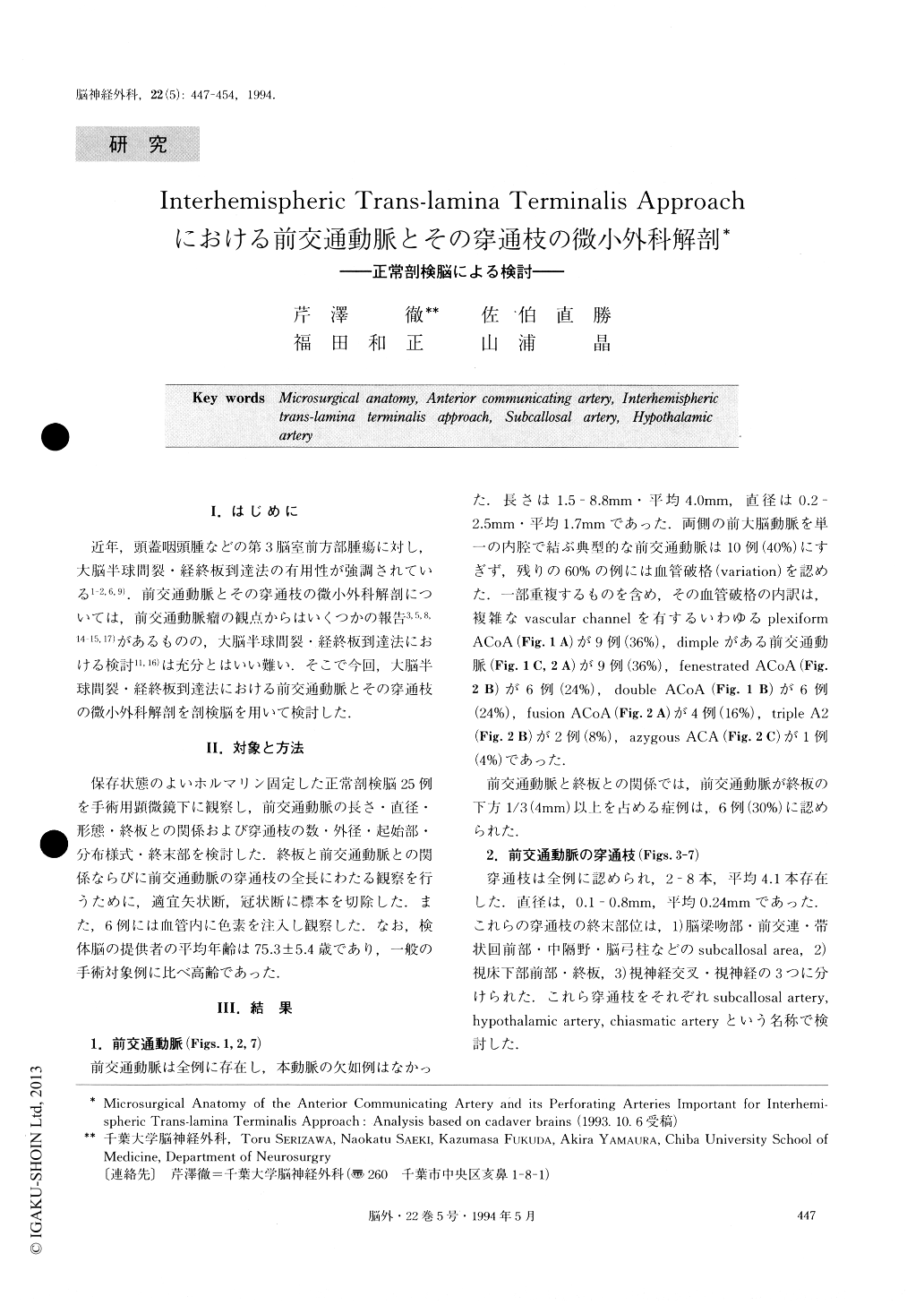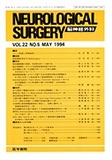Japanese
English
- 有料閲覧
- Abstract 文献概要
- 1ページ目 Look Inside
I.はじめに
近年,頭蓋咽頭腫などの第3脳室前方部腫瘍に対し,大脳半球間裂・経終板到達法の有用性が強調されている1-2,6,9).前交通動脈とその穿通枝の微小外科解剖については,前交通動脈瘤の観点からはいくつかの報告3,5,8,14-15,17)があるものの,大脳半球間裂・経終板到達法における検討11,16)は充分とはいい難い.そこで今回,大脳半球間裂・経終板到達法における前交通動脈とその穿通枝の微小外科解剖を剖検脳を用いて検討した.
Microsurgical anatomy of anterior communicating artery (ACoA) and its perforating arteries important for interhemispheric trans-lamina terminalis approach is examined in 25 cadaver brains under magnification us-ing a surgical microscope.
ACoA were found in all cases but 60% of those cases had variations such as plexiform ACoA, dimple ACoA, fenestrated ACoA, triple A2 and azygous ACA. In cases with variations such as plexiform ACoA, triple A2 and azygous ACA, it seems difficult to section and divide the ACoA to obtain a better operative field. Perforating arteries of ACoA were noted in all cases. They were classified into the subcallosal artery, hypothalamic artery and chiasmatic artery according to caliber, origin, course and termination. Among these three arteries, subcallosal artery is thought to be an offending artery in memory impairmnt, character change and psychological abnormalities, because it ter-minates at the bilateral subcallosal areas.
We stress in this paper that the subcallosal artery is the most important perforating artery of ACoA and the incidence of variations of ACoA is higher than pre-viously reported.

Copyright © 1994, Igaku-Shoin Ltd. All rights reserved.


